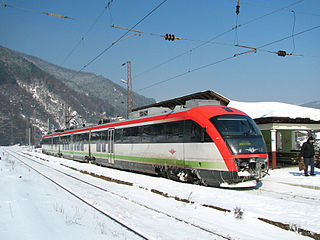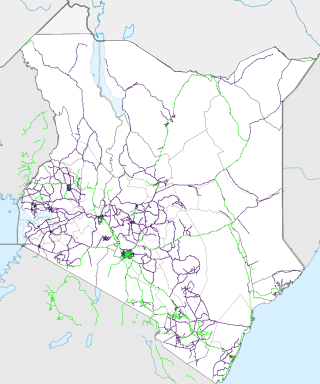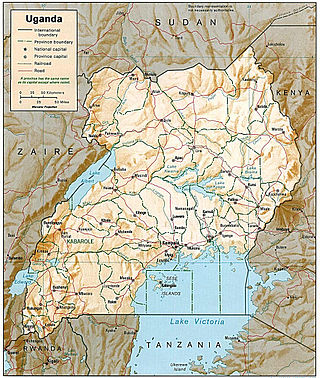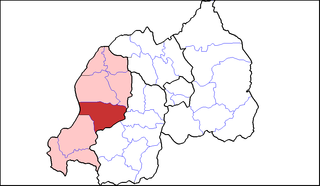
Transport in Bulgaria is dominated by road transport. As of 2024, the country had 879 kilometers of highways and another 117 km under construction. The total length of the network is almost 40,000 km, divided nearly in half between the national and the municipal road network. In addition, there are 57,000 km of streets. Buses play a significant role in long-distance public transport, coaches are operated by private companies. The capital Sofia has three major national bus terminals, the Central, the Western and the Southern Terminals.
There are a number of systems of transport in Burundi, including road and water-based infrastructure, the latter of which makes use of Lake Tanganyika. Furthermore, there are also some airports in Burundi.
Most transportation in Cape Verde is done by air. There are regular flights between the major islands, with less frequent flights to the other islands. Boat transportation is available, though not widely used nor dependable. In the major cities, public bus transport runs periodically, and taxis are common. In smaller towns, there are mostly hiaces and/or taxis.

Ground transport in the Democratic Republic of the Congo (DRC) has always been difficult. The terrain and climate of the Congo Basin present serious barriers to road and rail construction, and the distances are enormous across this vast country. Furthermore, chronic economic mismanagement and internal conflict has led to serious under-investment over many years.

Transport in Kenya refers to the transportation structure in Kenya. The country has an extensive network of paved and unpaved roads.

Transportation in Mauritius is characterized by the network of roadways, ports, and airports. The island was originally only accessible by boat until 1922, when the first flight landed in Mauritius.

The transportation system in Mongolia consists of a network of railways, roads, waterways, and airports.
Transport in Tanzania includes road, rail, air and maritime networks. The road network is 86,472 kilometres (53,731 mi) long, of which 12,786 kilometres (7,945 mi) is classified as trunk road and 21,105 kilometres (13,114 mi) as regional road. The rail network consists of 3,682 kilometres (2,288 mi) of track. Commuter rail service is in Dar es Salaam only. There are 28 airports, with Julius Nyerere International being the largest and the busiest. Ferries connect Mainland Tanzania with the islands of Zanzibar. Several other ferries are active on the countries' rivers and lakes.

Transport in Thailand is varied, with no one dominant means of transport. For long-distance travel, bus transport dominates. Low-speed rail travel has long been a rural long-distance transport mechanism, though plans are underway to expand services with high-speed rail lines extending to several major regions of Thailand. Road transportation is the primary form of freight transport across the country.

Kigali is the capital and largest city of Rwanda. It is near the nation's geographic centre in a region of rolling hills, with a series of valleys and ridges joined by steep slopes. As a primate city, Kigali is a relatively new city. It has been Rwanda's economic, cultural, and transport hub since it was founded as an administrative outpost in 1907, and became the capital of the country at independence in 1962, shifting focus away from Huye.

Transport in Uganda refers to the transportation structure in Uganda. The country has an extensive network of paved and unpaved roads.
A share taxi, shared taxi, taxibus, or jitney or dollar van in the US, or marshrutka in former Soviet countries, is a mode of transport which falls between a taxicab and a bus. Share taxis are a form of paratransit; they are vehicles for hire are typically smaller than buses and usually take passengers on a fixed or semi-fixed route without timetables, sometimes only departing when all seats are filled. They may stop anywhere to pick up or drop off their passengers. They are most common in developing countries or inner cities.

Kibuye is a city in Karongi District, and the headquarters of the Western Province in Rwanda.

Gisenyi, historically rendered as Kisenyi, is the second largest city in Rwanda, located in the Rubavu district in Rwanda's Western Province. Gisenyi is contiguous with Goma, the city across the border in the Democratic Republic of the Congo.

Boda bodas are bicycles and motorcycle taxis commonly found in East Africa. While motorcycle taxis like boda bodas are present throughout Africa and beyond, the term boda boda is specific to East Africa. In Kenya, they are more frequently called piki pikis or Boda. Their ubiquitous presence in East African cities is the result of a number of factors including an increasing demand for public transit, the ability to purchase motorcycles on credit, and an influx of cheap imports from Indian manufacturers like Bajaj and high level of unemployment among the youth. In the countries where they are present, boda bodas can provide transportation options to riders and job opportunities to drivers while at the same time resulting in an increase in road hazards and collisions and unnecessary injuries and deaths.

Karongi is a district (akarere) in Western Province, Rwanda. The district's capital is Rubengera. However, it comprises Kibuye, provincial capital and a major Rwandan lakeside resort. It is one of the districts with the lowest population density of 380 inhabitants per square kilometre (980/sq mi) as of the 2022 census.

Rusizi is a district (akarere) in Western Province, Rwanda. Its capital is Cyangugu, the major city of the Rwandan south-west and the district contains large parts of the former Cyangugu Province.

Société Nationale des Transports Aériens du Rwanda, or Air Rwanda as the airline was commonly known was the national airline of Rwanda, with its base at Kigali International Airport in Kigali. The airline operated for 21 years. In 1996 the airline was rebranded and renamed to Rwanda Air which finally led to the formation of RwandAir in 2002.
Zigama Credit and Savings Bank (ZCSB), is a microfinance bank in Rwanda. The bank is one of the financial institutions licensed by the National Bank of Rwanda, the national banking regulator.
Symbion Thermal Power Station is a 56 megawatts (75,000 hp) methane gas-fired thermal power plant located at the Cape of Busororo near the town of Nyamyumba in Rubavu District, in the Western Province of Rwanda.




















